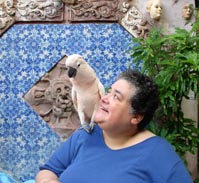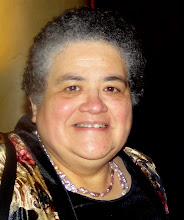
from MiApogeo.com (Check out MiApogeo for Latino news and views!)
March 2007
A Latino in the White House -- Cuando, Cuando, Cuando?
Why Not This Time Around?
Governor Bill Richardson cut an imposing figure at the presidential debates. Currently in his second term as governor of New Mexico, his curriculum vitae is more impressive than that of anyone in the race: He served seven terms in the House of Representatives; represented the United States in negotiations with Saddam Hussein, North Korean generals, and in the Middle East; as well as serving in Bill Clinton’s administration as Secretary of Energy and Ambassador to the United Nations. He has all the skills that would benefit an American president; he presented himself very well in the debates, yet he was flushed out of the Democratic primaries early on. And he has been the first Latino to do many of those things.
Why?
The answer that former Senator and also-ran John Edwards might give is that the money flowing into the superstar candidates, Hillary Clinton and Barak Obama, washed everyone else out.
A simpler answer might be that getting the attention of Americans is very hard; Senator Orrin Hatch (R.-Utah) learned this the hard way in 2000 when he ran in the Republican primaries as the “Proven Principled Common-Sense Conservative.” He thought that his high profile as chair of the Judiciary Committee during the Clinton impeachment hearings would provide the visibility he needed to mount a presidential campaign. He slunk away after his best efforts gave him less than 10% of the vote, an experience that he said he found very humbling.
Send Article to a Friend
Googling the web for clues to Richardson’s failure, I came upon Big Fat Blog. In one of the debates, Richardson had advocated a government program to end obesity saying that he had started to reverse it in his own state by changing the kinds of food available in school cafeterias and mandating exercise programs, to which one writer responded, “Has he looked in a mirror lately? He's fat!” And another blogger responded, “Yeah, he has awesome double chins!” He certainly is not the tanned, trim Richardson he was back when he was touring for Al Gore’s campaign in 2000. Eight years is a long time for those of us protected by evolution against starvation. Maintaining that slim and trim appearance at 61 is very hard for los gorditos among us.
I wonder if Barak Obama had looked like Norbit, Eddie Murphy’s movie character of the same name, Richardson would have had a better chance. One simply doesn’t associate soaring rhetoric with a person who is, as author Daniel Pinkwater would say, “circumferentially challenged.” This anti-fat prejudice has a long history: Part of what makes Shakespeare’s Falstaff funny is his corpulence; in the comedy duos of Laurel and Hardy or Abbott and Costello, much of the hilarity comes from making fun of the fat one. And we should not forget Garfield the ultimate fat cat. Even if the American people could look past Richardson’s girth or if he were to get back to his fighting weight, he is a policy wonk. Like Al Gore and Hillary Clinton, he radiates intelligence, experience and gravitas but, in his rumpled suit and unruly haircut, he lacks glamor and charisma.
It is too bad because he is the first Latino candidate to get this far in a national election. How can it be that estimates say that our population will be the largest minority by 2050, but we cannot get traction on the national stage?
Is it simply that charismatic candidates are rare in any season? Or is there something about Latino culture that does not translate into the mainstream culture? Or is it the simple fact that American voters are accustomed to being led by white men, have seen other black male politicians like the Rev. Jesse Jackson and Rev. Al Sharpton running for president, but Latinos are not yet on the radar?
Los Angeles mayor, Antonio Villaraigosa, is trim, slim and charismatic but he has that wonderful and unpronounceable Hispanic name and therein may lie a problem in the national arena. Any serious Hispanic candidate with a recognizably Spanish name will be burdened with the immigration issue, simply because there is so much raw animus against those who continue to steam across our southern border, all of whom are Latinos. I do not know the numbers but no one seems to be huffing and puffing about the number of immigrants coming in from Asian countries.
Immigrants and gays are the only remaining groups Americans feel safe hating outright: One need listen to CNN’s virulently anti-immigrant Lou Dobbs for five minutes to see the hate that he is perpetrating against these groups. Many non-Latinos assume that all Latinos are here illegally. The possible threat posed by a member of Al-Qaeda sneaking across the border is a cover for the long-standing hate for Latinos.
Did this affect Richardson’s candidacy? Because his name is not recognizably Hispanic, he might have flown in under the radar. But he made a point of announcing his heritage and that may have been a deciding factor in his poor showing. However, if Senator Clinton wins the nomination and has the good sense to tap him for the vice presidency, he could be a force to be reckoned with in the new administration.
Much has been made of some pundits’ comments about racism in the Latino community as well as anti-immigrant anger in the black community. I’ll discuss that next time.


